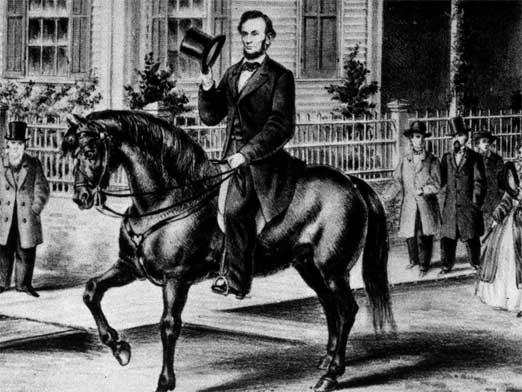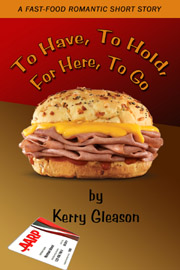Here is the transcript of an interview with author Kerry Gleason by Michael Buck, host of Books and Such on WBGR in Bowling Green, Ohio.
Q: So, Kerry, tell us a little about your novel, Angels & Enemies.
A: Well, it’s not published yet, so I’m wading in the publishing industry waters for the first time. Angels & Enemies is a chilling suspense thriller about spiritual warfare, the invisible war that takes place beneath the surface of every life, every day of our lives. The novel is 133,122 words and follows the lives of four very different people who are caught in the crossfire between angels and fallen angels, and a Catholic priest who attempts to avenge their diabolical visitations.
Q: Wow! Some light reading before bedtime! Now, you said earlier, off the air, that Angels and Enemies has a different format from most books. How so?
A: Well, it is different. I’ve written it in “episodes,” and the book begins with four novellas about characters undergoing strange events that are not what they seem to be. There’s Prescott Blakely, a high-level government consultant who is selling nuclear secrets to North Korea. There’s Sally Ramirez, a single mom who is fighting to keep her two young children from being targets of an international human trafficking ring. There’s Ron Baker, an underemployed contractor whose own house is in disrepair, who is seeking to be cured of cancer with these very special little green pills that glow. Finally, there is Boneyard Brown, a skinny relief pitcher from Iowa who falls in love with an all-you-can-eat place called Bubba’s Brick Oven. After the four novellas, the remaining episodes, featuring a fascinating priest, Father Francis Vindicare, weave these characters together as it sparks some acrimony between angels… and enemies. See how I worked the title in there. (laughs)
Q: Well played. Is there another author who influenced the style of Angels… & Enemies?
A: You got it, Mike! Angels & Enemies is a lot like the Twilight Zone meets the Bible. It is my homage to Rod Serling, a very brilliant writer who had ties to Upstate New York, where I am from. I tried to play off my knowledge of Hitchcockian suspense as well.
Q: How long did it take to write the novel?
A: A little over two years.
Q: Why so long?
A: Well, I moved cross-country to Colorado, where I’m trying to live an adventure a day. There was an adjustment period there, plus, I tend to do a lot of research. Before I can write, I have to feel like, in my mind, I can walk down the same streets as my characters. Which also means setting up little back stories for each of the characters, many of which are not in the book.
Q: If Angels & Enemies were a film, what would it be rated?
A: R.
Q: Why? Give us an idea of what people can expect to see in the pages of the book.
A: Let me try to summarize. You’ve got some of the seven deadly sins – not saying which ones – mountain lions, wolves, bears (perhaps), strippers, demon sex, cannibalism, terrorism, there’s a spelunking scene, medieval torture, and lets see – channeling, eels, serpents. Oh, and did I forget to mention three or four exorcisms. There is some necessary harsh language because foul language is a huge part of the demonic lexicon.
Q: Spelunking?
A: The exploration of caves and caverns.
Q: Ever done that yourself?
A: Never. Only in my mind when I wrote this novel.
Q: Channeling?
A: Actually, that was based on a real-life incident I experienced in Canada. It seemed very absurd as it unfolded, but had some rather serious after-effects for me.
Q: For those who may be confused, what is channeling?
A: Oh, I’m sorry. Channeling is a ritual, popular in a lot of Eastern cultures, where spirits of the dead are conjured, and a mystic is able to communicate the thoughts of the dead to the living. It is very ritualistic, and is sometimes used as a mind-control tactic. There is a reference in the channeling episode where the mystic pounds on Prescott Blakely’s chest, which can change a person’s heart rhythm. It’s called a Q on T phenomenon and during this induced arrhythmia, when the heart has stopped momentarily, evil spirits can enter a person’s being.
Q: Did you experience evil spirits?
A: I experienced something. I ran from the house where this occurred, and in the course of the three-hour drive home, experienced a rage that I’ve never had before. And never since. I had to stop and get off the road. In the rest stop mirror, I could see it changed my physical appearance. My face was all red and my eyes took on a manic behavior. As I was walking to a restroom, a stranger walking to his car asked me, “What is wrong with you? Can I help you, mister?” I tried to recapture that with Prescott. The poor guy.
Q: So, let me ask, maybe a little personal, but do you feel you’ve had a window with a view, so to speak, into spiritual warfare in the real world?
A: Absolutely. I feel as though my life is guided by an angelic presence. It has taken a lot of years to develop, but I’ve had a lot of brushes with evil, I have seen a lot of things. I think I’ve developed a certain sense where I can see angels – and their fallen colleagues – at work. Often it is tough to tell the difference. Fallen angels are tricksters and masters of deceit. Often what appears to our human eyes is one thing, while what is actually happening in the underlying spiritual world is something entirely different. Deceit. I tried to bring that out, illustrate that, in Angels & Enemies.
Q: We’re talking with first-time author about his forthcoming, yet-to-be-published novel, Angels & Enemies. Kerry, was it hard to write?
A. Very hard. I am not an evil person, don’t consider myself to be, but I had to write explicitly wicked details and events. When I was writing the evil parts, I felt like I had to be secluded, away from people, and I had to give myself time to get back into society. Sometimes a full day or so. After one scene I wrote, I was shaking for more than an hour after I shut off my laptop. I’m thinking if it had that effect on me, it will scare the hell out of the readers. Or maybe, scare the hell into them.
Q: Besides selling lots of books, what do you see as – what do you envision as the long-term effect of this novel?
A: Above all, it’s fiction and entertainment. But I hope it makes people think about events in the world – of the world – in a, with enlightenment. There are many dark forces in the world. Forces we don’t understand. The good news is that angels are warriors, and according to the Scriptures, there are twice as many of them as there are fallen angels. But maybe there need to be that many because society gives so much power to the evil. My greatest fear is that people are going to judge me by the evil I’ve written. I’m not a bad guy. I’m really not!
Q: Are you in need of an exorcism? There’s this guy, Fr. Francis, and he may be able to help you. How did you come up with the Fr. Francis character?
A: Ah, yes, Fr. Francis Dominic Vindicare. Symbolically, his name means “peaceful avenger for God.” He is flawed. He is human. But he sees the world on a different scale than most others. When I was a student at St. Bonaventure University, there was a Franciscan Friar, Fr. Alphonsus Trabold, who was an exorcist, certified to eradicate demons by the Vatican. He taught a class that was nicknamed “Spooks and Specters,” and he was a character. He’d keep the front row empty, nobody could sit in the front row because that was reserved for poltergeist. And he would welcome them into the room as they arrived. I never took the class, although now, I wish I had. But I would pass Fr. Alphonsus on campus, and he would always smile and say hello. So I based my Jesuit priest, Fr. Francis, on Fr. Alphonsus Trabold, and actually found articles and some excerpts from his own notes with prayers he used in his exorcism rites. Originally, Fr. Francis was a fringe character with a very minor role. I did not intend for Angels & Enemies to have such a strong religious flair. But as I got into the story, I had to rewrite it, because it needed a bridge between the supernatural and the human world in which we live. Fr. Francis is the bridge between those worlds. We learn a lot through his eyes.
Q: What is the next step for you?
A: I’ll put Angels & Enemies out there to find an agent. After I feel I have exhausted the possibilities, if I haven’t found an agent, I’ll look at self-publishing options. My underlying belief is that this is a story that needs to be told.
Q: Is there a sequel to Angels & Enemies in your future, or does the world come to a crashing halt?
A: The world doesn’t end. There is room for a sequel. But next, I feel I have to write some comedy. Come back from the dark side.
Q: How will we know when the book is available?
A: Subscribe to my blog. It’s javelinatime.wordpress.com.
Q: Javelina Time?
A: Yeah. I’m fascinated by them. They are one of those creatures that let you know God has a sense of humor. And, it’s in the last line of the theme song to the Flintstones, right? (singing) We’ll Javelina Time!
Q: Maybe the Homer Simpson version.
This blog is intended for entertainment purposes. It’s transcript is a feature of Javalinatime,Wordpress.com with permission of Michael Buck, “Books & Such” and WBGR which may be fictional in nature.




